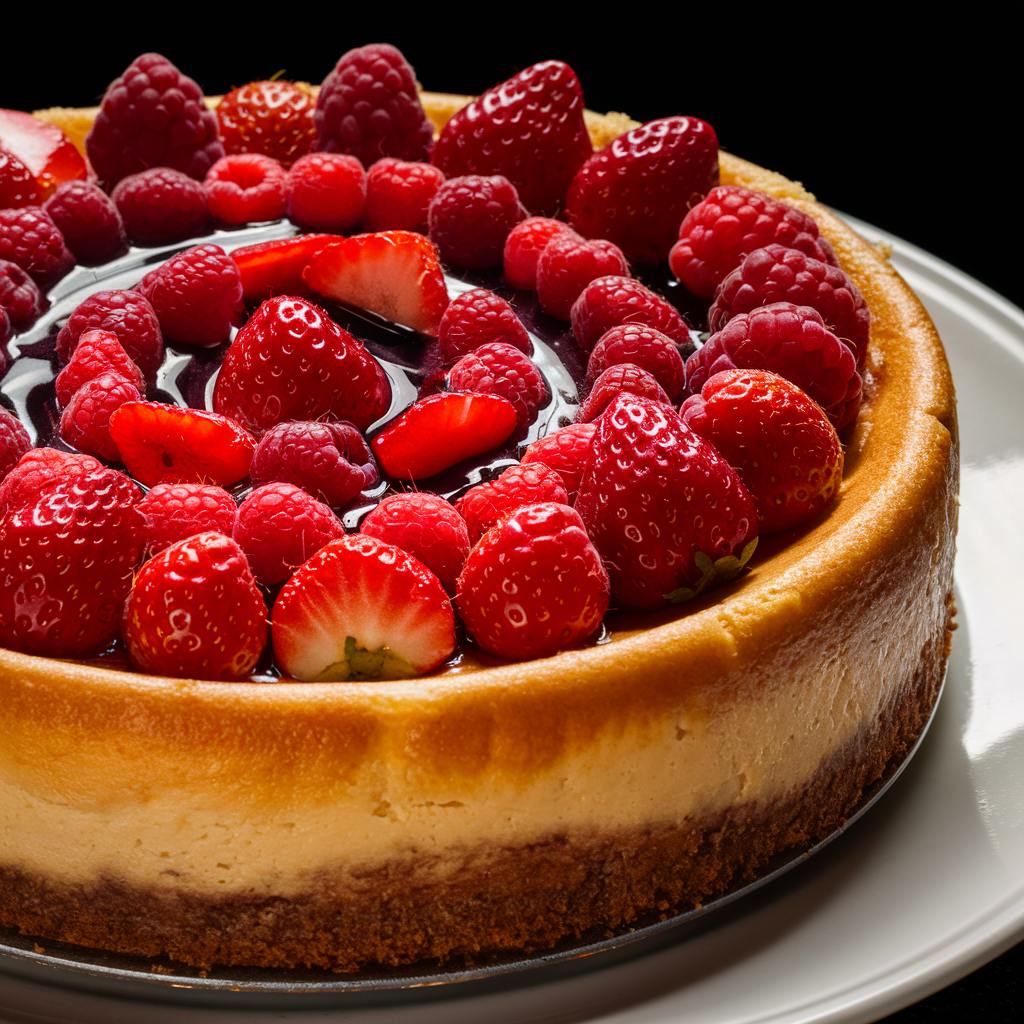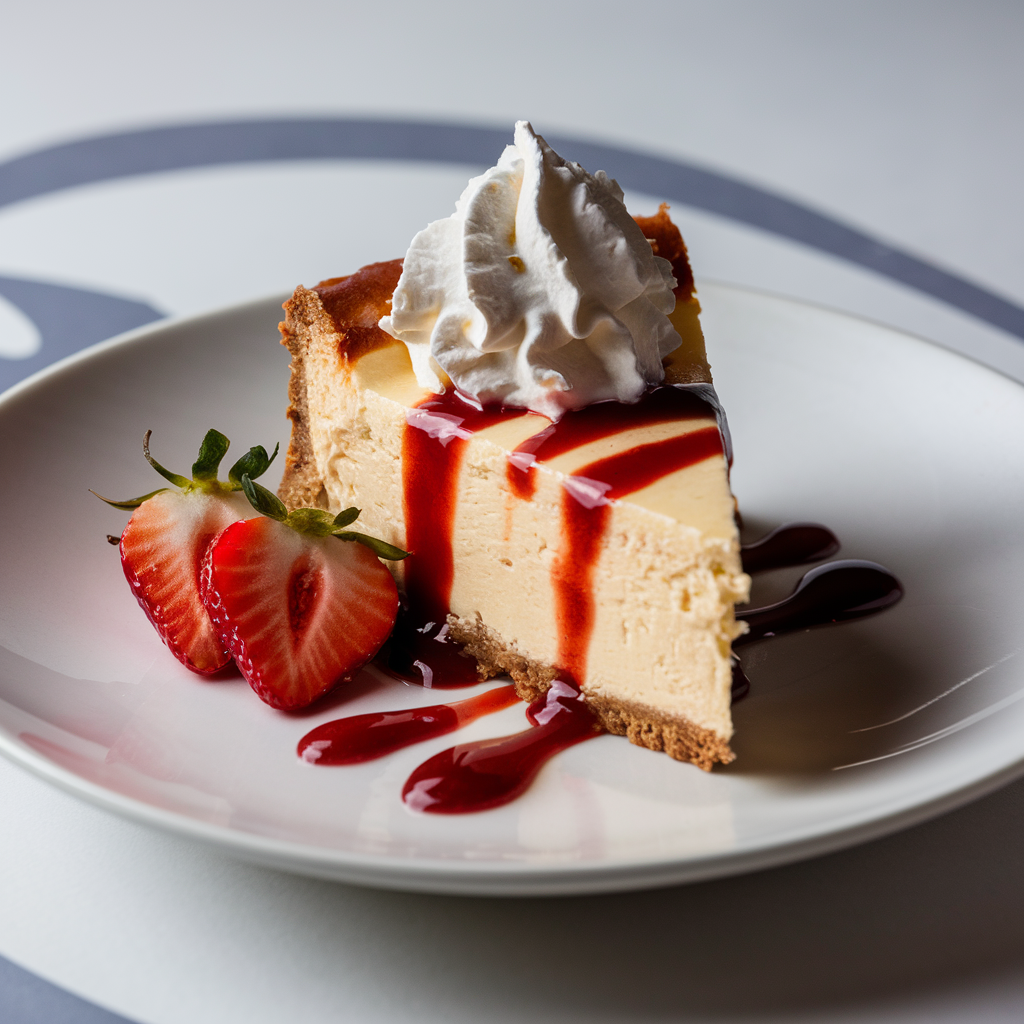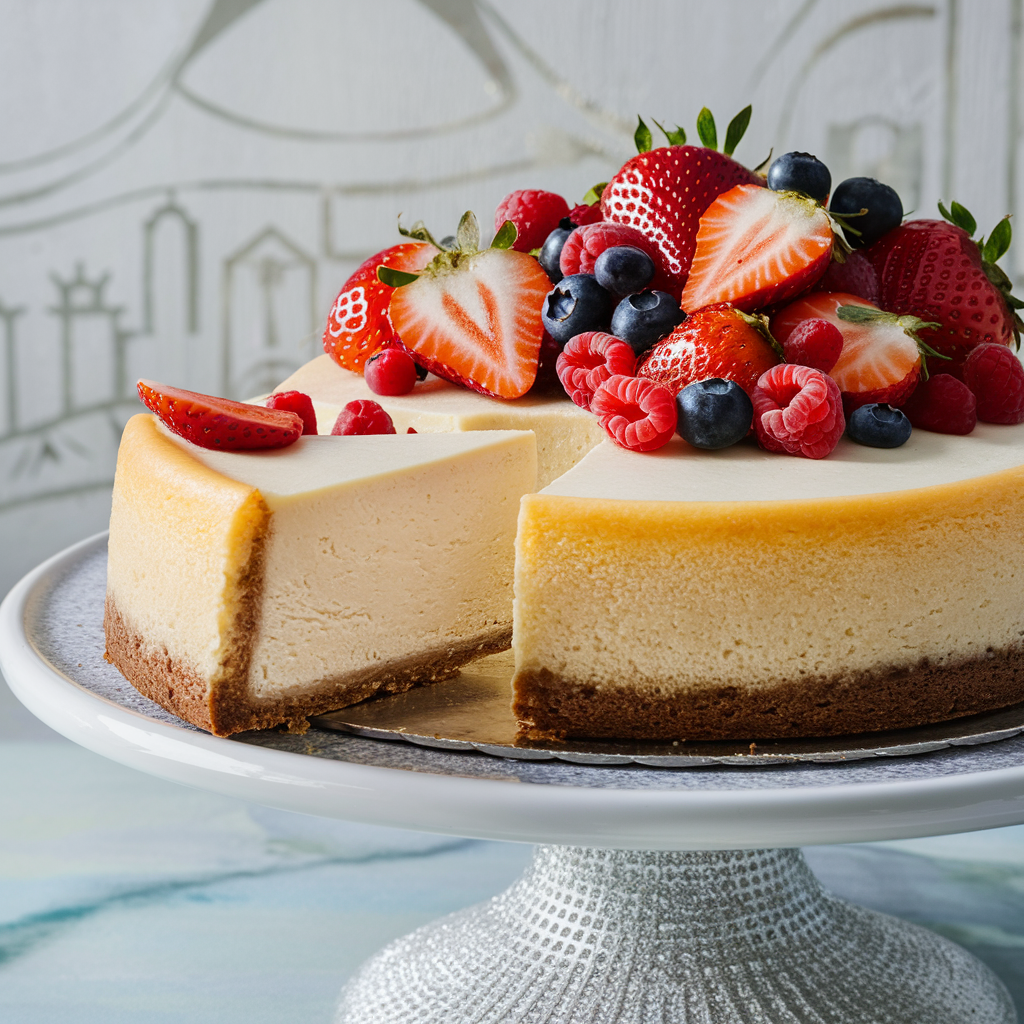Introduction
Is Philadelphia Cheesecake Filling Gluten-Free?
Philadelphia cheesecake filling is a favorite among dessert lovers, but for those with gluten sensitivities or celiac disease, it’s essential to determine whether this popular filling is safe to consume. Knowing if Philadelphia cheesecake filling is gluten-free can help you enjoy your dessert without compromising your health. Understanding the ingredients and certification of the product is crucial for making informed dietary choices.
What You’ll Need to Determine If Philadelphia Cheesecake Filling is Gluten-Free
To verify if Philadelphia cheesecake filling is gluten-free, you’ll need a few essential tools and pieces of information. This section will guide you through the necessary steps to ensure your dessert is safe for consumption.
Check the Ingredient List for Gluten-Free Certification
The ingredient list is your first line of defense in identifying any potential gluten-containing components. Carefully review each item listed on the packaging to spot any hidden sources of gluten.
Access the Manufacturer’s Website for Gluten-Free Information
Checking the manufacturer’s website is a reliable way to confirm if the Philadelphia cheesecake filling is gluten-free. Most companies provide detailed information about their products, including any gluten-free certifications or statements.
Recognize Gluten-Free Certification Labels on Philadelphia Cheesecake Filling
Understanding and recognizing gluten-free certification labels can give you added assurance. Look for symbols from reputable organizations such as the Gluten-Free Certification Organization (GFCO) or the Celiac Support Association (CSA).
Why It’s Important
- Ensures Safety: Verifying the ingredients and certifications helps prevent any adverse reactions.
- Peace of Mind: Knowing that the product is gluten-free allows you to enjoy your dessert without worry.
Ingredients
Understanding the ingredients in Philadelphia cheesecake filling is crucial for determining its gluten-free status. Here, we will break down the key components and identify what to look for.
Key Ingredients to Check
- Cream Cheese: The primary ingredient in cheesecake filling. Ensure it is plain and not flavored, as some flavorings may contain gluten.
- Sugar: Generally considered gluten-free, but it’s essential to check for any additives or fillers that might contain gluten.
- Eggs: Naturally gluten-free and a common ingredient in cheesecake recipes.
Gluten-Free Indicators
- No Wheat or Gluten-Containing Ingredients Listed: The absence of wheat, barley, rye, or other gluten-containing grains in the ingredient list is a good indicator that the product may be gluten-free.
- Certified Gluten-Free Label: Look for a certified gluten-free label from a recognized organization, which guarantees that the product meets strict gluten-free standards.
Why These Ingredients Matter
- Avoiding Gluten: Identifying and avoiding gluten-containing ingredients ensures that those with celiac disease or gluten sensitivities can safely enjoy the cheesecake filling.
- Ensuring Quality: Understanding the ingredients helps maintain the quality and taste of your dessert while adhering to dietary restrictions.
Instructions to Confirm Philadelphia Cheesecake Filling is Gluten-Free
To ensure that Philadelphia cheesecake filling is gluten-free, follow this step-by-step guide. This process will help you verify the product’s gluten-free status and avoid any potential cross-contamination.
Step-by-Step Guide to Verify Gluten-Free Status
Check the Label
- Examine the Ingredient List: Look for any gluten-containing ingredients on the packaging. Ingredients such as wheat, barley, rye, and oats (unless certified gluten-free) should be absent.
- Look for Allergen Statements: Manufacturers often include allergen warnings that can indicate the presence of gluten or cross-contamination risks.
Consult the Manufacturer
- Visit the Official Philadelphia Website: Check the product’s page for any statements about its gluten-free status. Many manufacturers provide detailed allergen and gluten information online.
- Contact Customer Service: If the website does not provide clear information, reach out to the manufacturer’s customer service for confirmation.
Look for Certifications

- Certified Gluten-Free Label: Verify if the product has a certified gluten-free label from reputable organizations like GFCO or CSA. This label indicates that the product has been tested and meets strict gluten-free standards.
- Cross-Check Certifications: Sometimes products may have gluten-free claims without certification. Cross-check these claims with reputable gluten-free resources.
Important Tips for Keeping Philadelphia Cheesecake Filling Gluten-Free
Avoid Cross-Contamination
- Use Clean Utensils: Always use clean utensils and kitchen surfaces to prevent gluten contamination. Even small amounts of gluten can cause reactions in sensitive individuals.
- Separate Storage: Store the cheesecake filling in a designated gluten-free area to avoid accidental exposure to gluten-containing products.
Store Safely
- Refrigeration: Keep the cheesecake filling refrigerated according to the storage instructions on the packaging.
- Shelf Life: For the best quality and taste, consume the cheesecake filling within a week after opening.
By following these instructions, you can confidently determine if Philadelphia cheesecake filling is safe for a gluten-free diet.
Nutrition Score

Understanding the nutritional information of Philadelphia cheesecake filling can help you make informed dietary choices. This section will break down the key nutritional components and their implications for a gluten-free diet.
Nutritional Information
Calories
- Check the Packaging: The exact number of calories per serving will be listed on the packaging. Typically, cheesecake fillings are calorie-dense due to their rich ingredients.
Fat Content
- Total Fat: Includes all types of fat in the product. Cheesecake fillings often contain significant amounts of fat from cream cheese.
- Saturated Fat: Found in higher quantities in dairy-based products. Important to monitor for heart health.
- Trans Fat: Ideally, this should be zero, as trans fats are harmful to health.
Carbohydrates
- Total Carbs: Includes all forms of carbohydrates, including sugars and fiber.
- Sugars: Cheesecake fillings can be high in sugars, contributing to their sweet taste. Monitor your sugar intake if you have dietary restrictions.
- Dietary Fiber: Usually low in cheesecake fillings, as they are not fiber-rich foods.
Protein
- Amount Per Serving: Cheesecake fillings contain some protein due to the cream cheese and eggs. Protein content is usually moderate.
Health Considerations
Suitable for Gluten-Free Diets
- Ensuring All Ingredients Are Gluten-Free: Double-check that all ingredients and manufacturing processes are gluten-free. This includes confirming the absence of gluten in any additives or flavorings.
Check for Allergens
- Other Allergens: Besides gluten, check for other allergens that may affect you, such as dairy, eggs, or nuts. This information is typically listed on the packaging or the manufacturer’s website.
By reviewing the nutritional information and health considerations, you can ensure that Philadelphia cheesecake filling fits into your gluten-free diet while also meeting your nutritional needs.
Serving & Storage
Proper serving and storage methods are essential to maintain the quality and safety of your Philadelphia cheesecake filling. This section will guide you through the best practices for serving and storing the product, ensuring it remains gluten-free and delicious.
Proper Serving Methods
Serve Chilled
- Refrigeration: Always keep the cheesecake filling refrigerated until you are ready to serve it. This ensures the best texture and taste.
- Chill Before Serving: If you are making a cheesecake, allow it to chill in the refrigerator for a few hours or overnight before serving. This helps the filling set properly.
Pair with Gluten-Free Crust
- Gluten-Free Options: Use a gluten-free crust or toppings to maintain a completely gluten-free dessert. Gluten-free graham crackers or almond flour-based crusts are excellent options.
- Avoid Contamination: Ensure that all ingredients and tools used to make the crust are gluten-free to prevent cross-contamination.
Storage Guidelines
Refrigeration
- Store Properly: Once opened, store the Philadelphia cheesecake filling in the refrigerator. Ensure the container is tightly sealed to preserve freshness.
- Designated Area: Keep the filling in a designated gluten-free area of your refrigerator to avoid accidental exposure to gluten-containing products.
Shelf Life
- Consume Within a Week: For the best quality and taste, consume the cheesecake filling within a week after opening. This guarantees the product retains its freshness and remains safe for consumption.
- Check Expiry Dates: Always check the expiry date on the packaging before use, and avoid using the product past its expiration date.
By following these serving and storage guidelines, you can ensure that your Philadelphia cheesecake filling remains fresh, safe, and gluten-free, providing a delicious dessert experience every time.
Variations

Philadelphia cheesecake filling is versatile, allowing you to create various delicious gluten-free cheesecake variations. This section will provide ideas and tips for different cheesecake variations that can satisfy diverse taste preferences.
Gluten-Free Cheesecake Variations
Classic Cheesecake
- Gluten-Free Graham Cracker Crust: Use gluten-free graham crackers to make the crust. Crush the crackers and mix them with melted butter and a bit of sugar. Press the mixture into the bottom of a springform pan and bake for a few minutes before adding the filling.
- Traditional Flavor: Stick with the classic cheesecake filling, using Philadelphia cheesecake filling, which is naturally gluten-free.
Berry Topping
- Fresh or Frozen Berries: Add fresh or frozen berries as a topping. Strawberries, blueberries, raspberries, and blackberries work well. Simply spread them over the top of the cheesecake after it has chilled.
- Berry Sauce: Make a berry sauce by simmering berries with a bit of sugar and lemon juice until they break down into a sauce. Let it cool before drizzling it over the cheesecake.
Chocolate Swirl
- Gluten-Free Chocolate Chips: Incorporate gluten-free chocolate chips into the cheesecake filling. Melt the chips and swirl them into the filling before chilling.
- Cocoa Swirl: Alternatively, mix cocoa powder with a small portion of the cheesecake filling and swirl it into the plain filling for a marbled effect.
Creative Ideas
Lemon Cheesecake
- Lemon Zest and Juice: Add lemon zest and juice to the cheesecake filling for a fresh, tangy flavor. Top with thin slices of lemon for garnish.
- Gluten-Free Lemon Curd: Spread a layer of gluten-free lemon curd over the chilled cheesecake for an extra burst of citrus flavor.
Nutty Cheesecake
- Gluten-Free Nut Crust: Use finely ground nuts like almonds, pecans, or walnuts mixed with butter and sugar as a crust. Ensure the nuts are certified gluten-free.
- Nut Topping: Sprinkle chopped nuts over the top of the cheesecake for added crunch and flavor.
By experimenting with these variations, you can create a wide range of gluten-free cheesecakes that cater to different tastes and preferences, all while ensuring they remain safe for those with gluten sensitivities.
FAQs
In this section, we’ll address some frequently asked questions about Philadelphia cheesecake filling and its gluten-free status. This information will help you make informed decisions and ensure your dessert is safe for consumption.
Is Philadelphia Cheesecake Filling Gluten-Free?
Yes, Philadelphia cheesecake filling is generally gluten-free. However, always check the label to ensure it meets your dietary requirements. The absence of gluten-containing ingredients and the presence of a gluten-free certification label can confirm its gluten-free status.
Does the Cheesecake Part of Cheesecake Have Gluten?
The cheesecake filling itself is typically gluten-free, as it is made from ingredients like cream cheese, sugar, and eggs, which do not contain gluten. However, the crust often contains gluten unless it is specifically made with gluten-free ingredients. To make the entire cheesecake safe for gluten-sensitive individuals, use a gluten-free crust.
Is Philadelphia Cream Cheese Spread Gluten-Free?
Yes, Philadelphia cream cheese spread is gluten-free. Individuals with gluten sensitivities can safely enjoy this product. Always check the label to confirm that there are no gluten-containing ingredients or cross-contamination risks.
Can You Eat Cheesecake if You Have Celiac Disease?
Yes, individuals with celiac disease can eat cheesecake as long as the cheesecake and its ingredients are verified to be gluten-free. This includes using a gluten-free crust and ensuring that all components, including the filling, do not contain gluten. Proper handling and storage are also crucial to avoid cross-contamination.
Additional Considerations
- Always Read Labels: Even if a product is generally known to be gluten-free, manufacturers can change their recipes. Always read the labels every time you purchase.
- Cross-Contamination: Be mindful of cross-contamination in your kitchen. Use separate utensils and preparation surfaces for gluten-free cooking to ensure safety.
By addressing these common questions, you can confidently enjoy Philadelphia cheesecake filling while adhering to a gluten-free diet.
Conclusion
Philadelphia cheesecake filling can be a delightful and safe option for those following a gluten-free diet. By carefully checking labels, consulting manufacturers, and ensuring proper storage, you can enjoy this popular dessert without worry.

6 thoughts on “Is Philadelphia Cheesecake Filling Gluten-Free?”